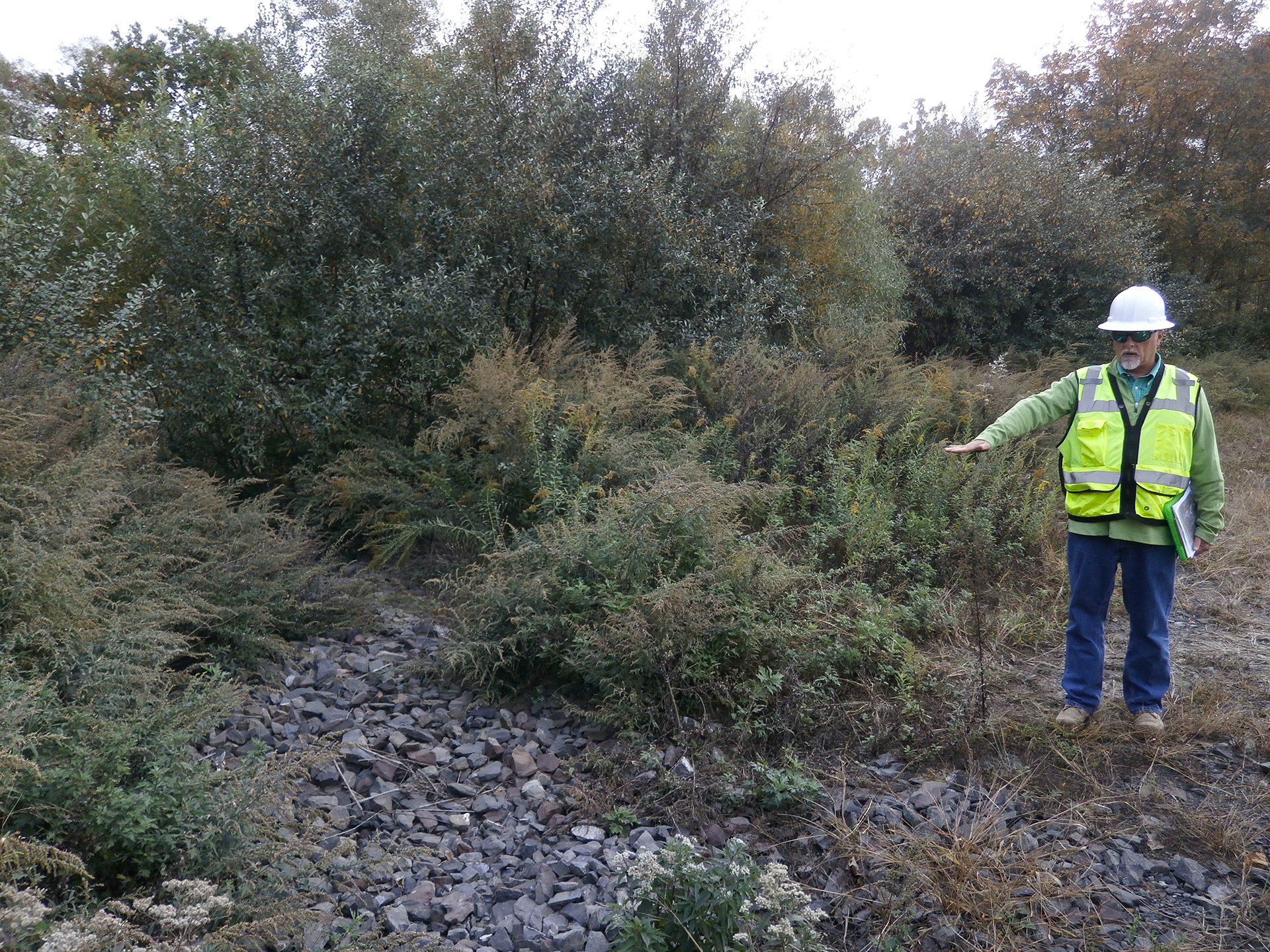Learn What it Costs Companies to Settle Environmental Violations
For many industrial operations, the first time they hear about the need for a certain environmental permit, plan, approval, or reporting is when they're finding out the hard way through a violation or other formal notice from a state or Federal regulatory agency. Many of our clients have come to us in the past after finding out that they are not in compliance with applicable environmental regulations at their operation, and they turn to us to help get them out of trouble. One thing we've come to help many of our clients with is getting out of trouble and alleviating potential fines from these regulatory agencies.
It's often difficult to explain how serious the Federal government, state agencies, and the general public, in the form of 3rd environmental groups, take environmental compliance. One of the easiest ways to illustrate how serious these regulations are is through examining previously settled cases where industrial facilities with various violations regarding different environmental laws, regulations or acts, have entered into a settlement agreement. In other words, what these environmental violations have cost them.

How much does a fine, violation for breaking environmental laws or regulations cost?
The answer is it depends. There's the maximum you can get charged, what a notice of violation is saying you'll be charged, and what you eventually settle upon after dealing with regulators.
Minimum & Maximum Environmental Regulatory Fines & Enforcement
Let's start with the maximum. Just like any other law out there, when you break or violate environmental regulations and laws, there are both minimum and maximum penalties you can face. As you can imagine, the worse the violation, the higher the cost. There are provisions in the Clean Air Act, Clean Water Act, and other environmental regulations that lay out some stiff penalties if you engage in particularly bad activities, even including potential jail time.
Generally, the minimum for regulatory non-compliance is $2,500 per day, per violation, while the maximum can range from $25,000 to $1,000,000 per day, per violation, depending on the violation and some other criteria. As you can see, the fines can add up quickly if you're out of compliance, especially if you've been operating for awhile, you have multiple facilities, and you have multiple violations at each facility.
Notice of Violation Monetary Fines
If you are found to be non-compliant, and you receive a letter from an agency stating a violation, it's likely going to be a BIG number. Again, think of the outside world. When you hear someone is suing someone else or a company, they usually start at a high number, because after time, effort, and legal back and forth, that number will decrease.
So, you might be facing extreme numbers on a notice of violation from a regulatory agency, but you'll likely end up paying less than the initial amount stated on the notice. Could be 95% less, could be 5% less, it all depends on how much wiggle room you'll have to fight that fine. If you received a notice of violation with an extremely large number, it's likely that you're getting the maximum fines imposed. If you run multiple facilities, or were found to be non-compliant in several areas, it's not uncommon to get a notice of violation in the hundreds of thousands to million dollar or more range.
Average Settlement Costs for Non-Compliance
Here's where we did the math. Based on a handful of cases that we've been involved in, as well as a few dozen publicly available briefs regarded settled cases with the USEPA, state environmental agencies, or 3rd party environmental groups, we figured out what smaller sized industrial facilities, like manufacturing, construction materials, recycling, etc., end up paying on a per facility basis to settle environmental violations. So if a total settlement was $100,000 and there was 2 facilities, we would say that each facility paid an average of $50,000. Make sense?
Now before we get into the numbers, remember, no two facilities, or violations, are alike. One facility in a case could have been grossly out of compliance, while another had minor issues, but for our sake we're looking at everything equally. OK, here's the numbers we came up with.
- EPCRA Violation Settlements - $42,411.40
- SPCC Violation Settlements - $62,481.62
- Clean Water Act Violation Settlements - $68,472.31
- Clean Air Act Violation Settlements - $122,089.87
Do the math - if you have 10 facilities all facing CWA violations you might be able to expect to pay roughly $68,000 per facility once you settle with the USEPA or a state agency. That's $680,000!
If you have information saying otherwise, want more details, or are curious about these numbers, let us know below in the comments. We want to make these calculations as realistic as possible!

Why should I care about how much environmental violations cost my business?
Many businesses out there don't see the "value" in environmental compliance, because unlike other areas of their businesses, it's normally not a money driver. If there's no ROI, what's the point? This is especially true for people who have flown under the regulatory radar so to speak, making it extra difficult to highlight the need to spend money on getting into environmental compliance when they never spent a dime in the past.
The simple answer is always this - getting into compliance now is cheaper than being forced to do it later. Look at those numbers above! The average settlement number on a per-facility basis is massive! Environmental compliance is preventative, just like it's easier to not eat junk food now than lose weight later, or it's easier to pay your taxes now versus pay the IRS fines later.
If you want to wait until you get in trouble, expect to pay those above average settlement numbers, plus other costs. Finding out you need to get into compliance can often include additional costs you may not be considering, such as:
- Legal Fees - You're likely going to need legal helping navigating you through some part of the process. State or Federal agencies are going to bring their legal team in if the issue is big enough, meaning you will need to as well. We're not lawyers, but from our experience if you're dealing with specialized lawyers at this level dealing with environmental regulations, you can expect to spend a fair amount of money.
- 3rd Party Environmental Group Legal Fees - If you were sued by a 3rd party, instead of dealing with the government, it's very likely that as part of the overall settlement of the suit you will have to pay their legal team's fees. That's right, you'll get sued and have to pay for the lawyers who sued you. Like rubbing salt in a wound, right?
- 3rd Party Environmental Group Donations - Just like paying for 3rd party's groups legal fees, you can likely expect to either make a monetary donation, a product donation, or a volunteer donation to their group, projects, or the cause they represent. We've seen concrete producers forced to donate concrete to be used on various projects for free. We've seen companies forced to make $50,000+ donations to environmental causes. Point is, these costs can be all across the board, from simple material costs to writing checks with several zeros on the end.
- Additional Environmental Considerations - If you got in trouble for one thing, expect regulators to scrutinize everything. For example, if you had someone raising issues about NPDES stormwater permit compliance, you could expect those regulators to also start looking into air permit compliance levels, or if you need a SPCC Plan, if you should be conducting any type of EPCRA reporting, or if you need anything else. If you get dinged for one thing, expect to get dinged for EVERYTHING.
- Environmental Consulting Fees - This goes with the above point. If you get in trouble for NPDES violations, you might need to get covered under a stormwater permit, or update a SWPPP. No big deal, that's not too expensive, and could run you anywhere from a couple hundred to a few thousand dollars, depending on if you decided to do it yourself versus hiring an expert. But if you start tacking on additional environmental considerations, like needing someone to help you with TRI Reporting, or to develop new SPCC Plans at your facility, the cost of hiring a professional can increase significantly.

- Site Modifications / Equipment Costs - There are times where businesses are forced to make modifications to their facility, whether it's the layout, how they operate, purchase new equipment, or anything else related, because there is no way for them to get into compliance with the applicable environmental regulations as they currently are. This could be something as simple as buying hay-bales and a pH meter to test your stormwater runoff, the installing elaborate equipment to treat your emissions. It all depends.
- Staff & Business Interruption - Just like everyone else, your schedule is full from the moment you get to work to the moment you punch out. Can you afford to take time away from your business to deal with all this stuff when you get in trouble? And remember, it is possible for your facility to be shut down if you are out of compliance. Can you afford to send everyone home and stop operating for a day? A week? A month?
- On-Going Compliance Costs - One you get covered under these various regulations, there are numerous on-going costs. Depending on your operation's size, and applicable environmental regulations, that could be cheap, or it could be tens of thousands of dollars a year. You are REQUIRED to do things like conduct annual training, monitor stormwater runoff or air emissions, conduct reporting, pay for lab results, etc. It's like buying a car, you'll need to keep spending money to keep things running smoothly.
- Cross-Enforcement Actions - Once you get regulators at your facility poking around, it's entirely possible, and we've seen this before, that they start making some calls to other agencies. OSHA could show up, the USEPA, health departments, your city's agencies, your county's agencies, your state's agencies. Point is, you never know who could show up once regulators start poking around behind the curtain.
- Hidden Costs - Let's be honest here, if you get in trouble for something, your company is going to take a PR hit. This could lead to anything, include loss of customers, bad reputation in the community, bad reputation with your staff, who knows what else. It's hard to put a number on this because it's often hard to track, but environmental regulatory compliance violations do effect businesses.
- Criminal Penalties - This is worth mentioning, and it does happen every so often, but if you're doing something particularly bad, it's possible that you could face criminal penalties. Do you want to go to court? Do you want to pay fines? Do you want to risk jail time? All because you weren't in compliance with environmental regulations? I'm sure the answer is no, but trust us, it happens.
Point is, what turns into a violation for one thing can quickly spiral into a full blown enforcement action against your entire facility for a variety of different regulatory compliance areas.
Need help with environmental compliance?
Do you need help with environmental compliance at your plant, facility, or company? If so, you've come to the right place. RMA has been actively involved in helping companies get and stay in compliance since our founding in 1992. Long story short, we know the ins and outs of the environmental problems industrial facilities face, and can help you get into compliance with the applicable laws and regulations, ensuring your business stays out of trouble. Our staff members have been on-site at thousands of industrial operations across the country, so when we say we've seen it all and done it all, we mean it. We've helped multi-national organizations on multi-state projects, as well as small mom and pop operations. No matter your size or industry, we can help.
So, if you're having any type of issue at your operation, we'd love to talk and learn how we can help. Even if we can't help, chances are pretty good we know who can help you, and we'd love to get you in touch with the right people to fit your needs.
To reach out, feel free to shoot us an email at info@rmagreen.com, click here to contact us, or give us a call anytime at 888-RMA-0230 to learn how we can help your operation deal with environmental regulations.















